ROCK ART
for Beginners
Simple Techiques and Easy
Projects for Transforming
Stones into Art
F. Sehnaz Bac, Marisa Redondo, and Margaret Vance

Contents


Getting Started


Tools & Materials with F. Sehnaz Bac
Before you begin painting your stones, you need to have the correct materials and tools. Most of these items can be found at your local art and craft store. In time, as you paint more stones, you can decide which materials work best for you .
Pencils & Erasers
First you need pencils to sketch your designs onto the stones. I use hard lead pencils (at least 2H). To correct any errors on your sketch, use soft art erasers. You can use a compass for basic circles in mandala designs.
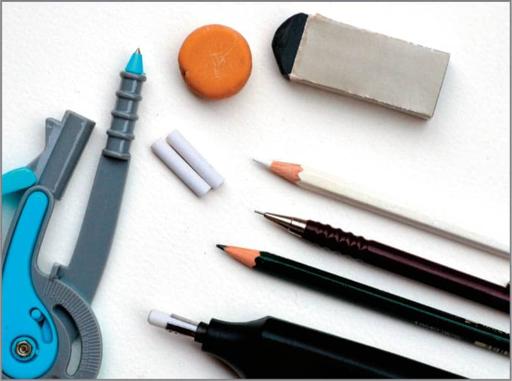
Transfer Paper
There are different levels of transfer paper for light surfaced stones and dark surfaced stones. Use them with caution, as it can be difficult to remove transfer lines with an eraser.
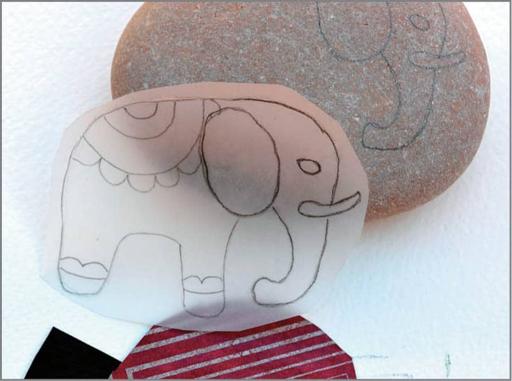
Paintbrushes & Sponges
You will need synthetic round brushes with different sizes to begin. I use tiny ones: sizes 0, 00, 000 for details, and sizes 14, 16 for larger areas. Always wash your brushes with soapy water after use. Use sponges to create bright backgrounds and special effects.
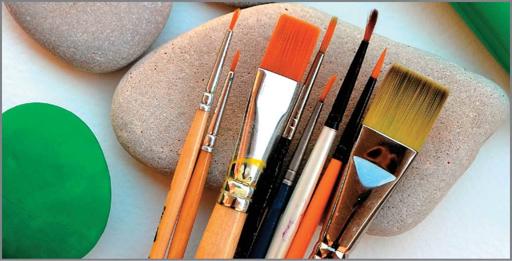
Paints
Acrylic paints are the best choice for stone painting. They are easy to apply, have brilliant colors, and cover the surface easily. You can find them in tubes, jars, or plastic containers. These paints dry very quickly, so keep their containers closed when they arent in use. Alternatively, you can use water-based craft colors.

Inks & Dip Pens
You can use ink on your stone paintings. I use mostly acrylic inks, as they are highly pigmented and have intense colors. Inks are very good for fine details if you use them with a small brush or dip pen. Dip pens are also known as calligraphic pens, and come with a pen holder and different sized tips. You can use dip pens when you draw detailed line work on your painting.

Varnishes
I use mostly acrylic varnishes to protect my painted stones. You can use glossy or matte varnish according your taste.
Paint Pens, Markers, and Fine-liner Pens
When you want to draw or paint more detailed designs, you can use paint pens. There are many different kinds to choose from. I use water-based paint pens and markers.

Fine-liner pens are useful when you want to detail designs on your stones or pebbles. They have archival indelible ink, and extra-thin sizes are useful to work with tiny details. When you use them over painted areas, make sure your acrylic painted layer is completely dry so that they will not mix with acrylic colors.

Selecting & Prepping Rocks with F. Sehnaz Bac
When you want to paint rocks as a hobby or for your craft projects, first you need to search for the right rocks. The most common place to find nice stones is at the seaside. Along the shores of beaches, you can find stones of different sizes, shapes, and forms. Rivers, riverbeds, or lakes are also wonderful places to collect stones. When you collect your stones, it is important to choose the right sizes, shapes, and textures for the designs you want to create. You can collect as many stones as you like, and decide later what to paint on them, or you can choose specific stones for specific designs.
A variety of rocks, including natural rocks, can be purchased from rock suppliers. In these expansive yards, rocks are sorted according to size and type. You can also find flat flagstone in a variety of colors, thicknesses, and textures. Locate a rock supplier by searching your local area for Landscape Supplies.

I collect stones on the beaches of the Adriatic Sea in Italy. There, I find many varieties of stones and pebbles. Some of them are very smooth with regular forms and flat surfaces, but some of them are rough and textured. If you arent near a beach, river, or lake, there are other ways to find stones. You can buy your stones from craft stores, garden centers, or even online.
Size & Shape
Smooth and flat stones are ideal for working with ink or markers. You can paint or draw directly onto their natural surfaces. Rough and textured stones also work well if they have the desired shape youre seeking. I often choose my stones by their shapes: oval stones for owl or fish designs, round for mandalas, irregular shapes for bird or animal designs. Unique stones help increase my creativity by thinking of new ideas and concepts.

Stones have different colors that can create special effects when you paint them. For example, naturally dark or black stones are great choices for monochrome designs using white, gold, or silver ink. White, smooth stones are ideal for painting bright colors. Even rough stones with a special shape can look great after applying a few levels of paint to them.
Washing & Varnishing

After I collect my stones, I leave them in a bowl of water for a few hours to soak off any excess dirt or sand particles. Next I clean them with a soft brush and mild soap. After rinsing with running tap water, I leave the stones to dry for at least one day out in the sun or in a warm place inside, near a window.

After they are completely dry, your stones are ready to paint! If your rocks are rough or porous, you can make them more smooth by adding a few coats of paint. Apply one or two coats of white acrylic paint, and once the paint dries, rub the surface with very fine sandpaper. This will help smooth the surface for your design.
Next page

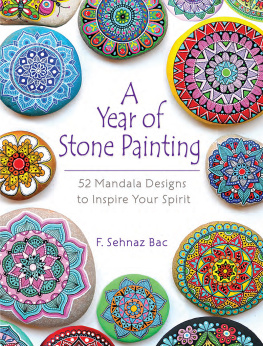


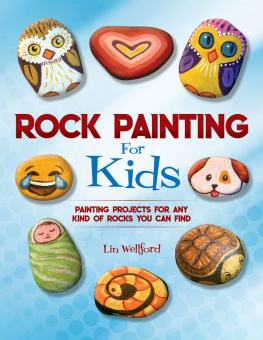
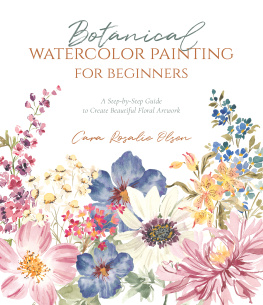
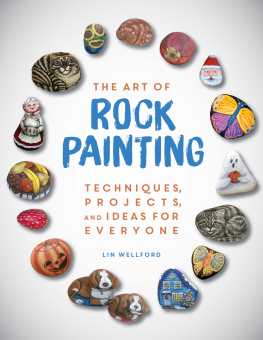

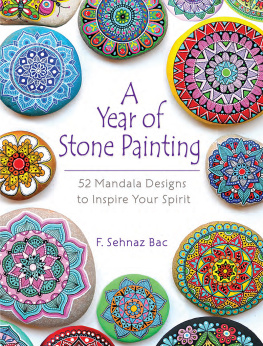


 Getting Started
Getting Started 











